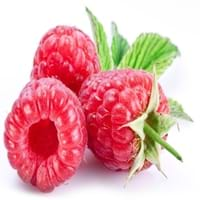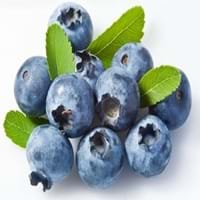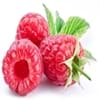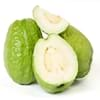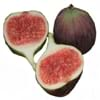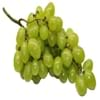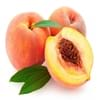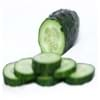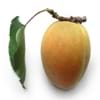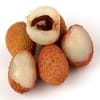raspberry lan bilberry
Wuku
Kesehatan keuntungan
Nyegah kanker, care Heart, Ngalangi kamudhunan macular, Nyuda masalah getih circulation
Nyegah kanker, Cures masalah gastro-usus, Mbenakake sesanti wengi, Mbenakake kesehatan weteng, ngalangi diabetes, Ngalangi meksa getih dhuwur, Nyuda masalah getih circulation
Wuku Umum
anti-natoni, Kontrol tingkat gula getih, sepindah pencernaan, care mripat, Mbantu ing bobot mundhut
Gelut nglawan infèksi, Mbantu ing bobot mundhut, Ngalangi clotting ing prau, Perawatan saka infèksi ngenani babagan pipis ngambakake
Wuku kulit
keuntungan Anti-tuwa, Brightens lan madhangi corek
keuntungan Anti-tuwa, linuhung kulit, Nglindhungi marang karusakan kulit
Wuku Rambut
Tumindak minangka moisturizer, Ngatur rambute wutah, mengilap rambute
Ngalangi rambute mundhut
alergi
Gejala alergi
AMBEGAN kangelan, eczema, hives, gatel, rame Nasal, irung runny, wahing, mata mbanyu, wheezing
ora Sumadhiya
sisih efek
reaksi alergi
Nyuda tingkat gula getih, Diarrhoea, Pening, Sakit Kepala, getihen internal, pain weteng
Recommeded kanggo
Women ngandhut
Ya
Ya
Women lactating
Ya
Ya
Wektu paling apik kanggo mangan
Best yen dijupuk minangka sarapan (utawa weteng P), Minangka cemilan ing afternoon pungkasan, Aja mangan sawise meal, wektu esuk (sadurunge nedha awan)
Minangka cemilan ing afternoon pungkasan, Ora nganggo ing wayah wengi lan sadurunge amben, Mangan sing gedhe-gedhe seger, supaya nyawiji karo sembarang panganan, ora mangan sawise meal., wektu esuk (sadurunge nedha awan)
Nutrition
Bantu Size
100 g
100 g
karbohidrat
11.94 g
99+
11.50 g
99+
serat
6.50 g
6
2.80 g
22
Sugar
4.42 g
99+
0.00 g
99+
protein
1.20 g
19
0.70 g
99+
Protein kanggo milai rasio
0.10
15
0.06
21
vitamins
Vitamin A (retinol)
2.00 MCG
33
1.08 MCG
35
Vitamin B1 (thiamin)
0.03 mg
30
0.03 mg
31
Vitamin B2 (riboflavin)
0.04 mg
24
0.03 mg
30
Vitamin B3 (niacin)
0.60 mg
26
0.58 mg
28
Vitamin B5 (pantothenic asam)
0.33 mg
11
0.16 mg
38
Vitamin B6 (Pyridoxin)
0.06 mg
32
0.06 mg
29
Vitamin B9 (folic asam)
21.00 MCG
13
6.00 MCG
29
Vitamin C (Ascorbic asam)
26.20 mg
35
44.00 mg
18
Vitamin E (Tocopherole)
0.87 mg
12
0.00 mg
99+
Vitamin K (Phyllochinone)
7.80 MCG
10
4.00 MCG
18
Lycopene
0.00 MCG
9
0.00 MCG
9
lutein + zeaxanthin
136.00 MCG
7
0.00 MCG
36
kolin
12.30 mg
3
0.00 mg
32
lemak
0.65 g
12
0.50 g
18
Minerals
kalium
151.00 mg
99+
103.00 mg
99+
Iron
0.69 mg
18
0.80 mg
16
sodium
1.00 mg
20
3.00 mg
17
calcium
25.00 mg
18
15.00 mg
26
Magnesium
22.00 mg
11
7.00 mg
28
seng
0.42 mg
6
0.10 mg
23
fosfor
29.00 mg
18
9.00 mg
39
Manganese
0.67 mg
5
3.30 mg
1
tembaga
0.09 mg
24
0.11 mg
19
selenium
0.20 MCG
15
0.00 MCG
17
Asam lemak
3s Omega
126.00 mg
5
ora Sumadhiya
6s Omega
249.00 mg
7
ora Sumadhiya
Sterol
Kadar banyu
85.75 g
35
0.20 g
99+
Ash
0.46 g
29
87.10 g
1
Kalori
Bantu Size
100 g
100 g
Kalori ing woh Fresh karo Peel
53.00 kcal
21
44.00 kcal
29
Kalori ing Fresh woh tanpa Peel
ora Sumadhiya
ora Sumadhiya
Kalori ing Frozen Formulir
52.00 kcal
13
ora Sumadhiya
Kalori ing Formulir Dried
363.00 kcal
9
ora Sumadhiya
Kalori ing Formulir Canned
91.00 kcal
8
ora Sumadhiya
Kalori ing Foods
Kalori ing Juice
68.00 kcal
18
75.00 kcal
14
Kalori ing Jam
150.00 kcal
33
164.00 kcal
32
Kalori ing Pie
169.00 kcal
99+
293.00 kcal
21
Ciri
Koleksi
Semono uga Sindhunata
Semono uga Sindhunata
Usum
Summer
Summer
varieties
Amity, August Red, Boyne, Canby, Caroline, Comet, Dinkum, Dorman Red, Latham, Meeker, Black Hawk, Hayda, Lauren, Meeker lan Latham
Dwarf bilberry Piper, bog blueberry, Northern bilberry Mountain bilberry lan Oval nduwèni godhong bilberry
seedless Macem-macem
Ora
Ora
warna
Black, Purple, Red, kuning
peteng kain wungu
nang werna
Pink
Ijo enom
wangun
conical
babak
Tekstur
jus
jus
rasa
manis
manis
asal
Eropah, Asia North
Unknown
mundak akeh ing
wit
wit
budidoyo
Koleksi lemah
Sandy loam
lembab, Inggih-aerated
PH lemah
5.8-6.5
4.5-5.5
Kahanan iklim
Cold
Cold
Facts
facts about
Character length exceed error
- Bilberries digunakake ing Manufaktur ombenan alkohol.
- Padha digunakake kanggo nambah aromas saka sorbets.
- Extract ijo godhong iku kang digunakake ing industri tekstil minangka pewarna alam.
Ing Minuman Beralkohol
Wine
Ya
Ya
Beer
Ya
Ya
roh
Ya
Ya
koktail
Ya
Ya
Produksi
Top Producer
Rusia
Japan
Negara sing
Azerbaijan, Canada, Mexico, Poland, Serbia, Spanyol, Ukraina, Inggris, Amerika Serikat saka Amerika
Denmark, Finland, Iceland, Swedia
Top Importir
Amerika Serikat saka Amerika
Amerika Serikat saka Amerika
Top Used
Poland
Chile
Jeneng èlmiah
Jeneng botani
Rubus Idaeus
Vaccinium myrtillus
sinonim
blaeberry, whinberry, blueberry Eropah, whortleberry
Klasifikasi
domain
Eukarya
Eukarya
Inggris
Plantae
Plantae
Subkingdom
Tracheobionta
Tracheobionta
Division
Magnoliophyta
Magnoliophyta
kelas
Magnoliopsida
Magnoliopsida
subkelas
Rosidae
Dillenhidae
supaya
Rosales
Ericales
Family
Rosaceae
Ericaceae
genus
Rubus
Vaccinium
spesies
R. idaeus
Vaccinium myrtillus
Generic Group
Rose
Heath
|
||
|
||
|
